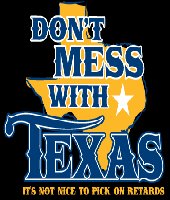
|
RSTS Basic information
NOTICE: TO ALL CONCERNED Certain text files and messages contained on this site deal with activities and devices which would be in violation of various Federal, State, and local laws if actually carried out or constructed. The webmasters of this site do not advocate the breaking of any law. Our text files and message bases are for informational purposes only. We recommend that you contact your local law enforcement officials before undertaking any project based upon any information obtained from this or any other web site. We do not guarantee that any of the information contained on this system is correct, workable, or factual. We are not responsible for, nor do we assume any liability for, damages resulting from the use of any information on this site.
---------
Rsts is one of the most versatile operating systems available for
the PDP-11 series of computers. It can emulate both RSX and RT-11 (though not
fully), and is often a choice where multiple concurrent operating systems must
be online. I was a system manager on an 11-23 for about a year and learned a
fair amount about the OS (perhaps forgetting a good deal in the interim). This
phile applies to release 8.0 and the entire 7 series. By the way, version 9.0
is it - DEC is discontinuing RSTS with that release and using 9.0 as a bridge
to VMS for the PDP-11 series. The logon will tell which version you are
hacking.
If the SYSTAT-before-logon has been disabled (It probably has), no big
worry. Account 1,2 must be present on the system and contains most of the
system utilities. On booting, the account is called at least 8 times to put
batch processors and spoolers online. Changing [1,2]'s passwords in the
command file is a tedious process - most system managers are too lazy, so it
won't change often. Oh yes, the default PW for 1,2 is SYSLIB. This knowledge
should cut hacking time considerably for many systems. When you get in, RUN
$MONEY. This gives all accounts, KCT's (Billing units), accesses, time on
system, and PASSWORDS, if you ask. Don't reset the system when it asks, it
merely zeroes the program and not the hardware, but could tip someone off that
he system had been hacked.
Personally, I like running out of a new account, so RUN $REACT.
Pick a new account #, making sure the first number (before the comma) is a "1"
to get full privilege. Accept defaults for disk placement. As for Cluster
size, I prefer 4. It's large enough to get fast disk access, but small enough
so that little space is wasted for small files. Cluster size is shown (CLU or
CLS) on MONEY and on DIR/FULL. Follow conventions and you'll stand less chance
of being noticed.
RSTS has some of the most complete HELP files short of a CDC mainframe.
HELP HELP will give the forst screen of the nested menus. Be sure to do this
from a privileged account or you'll miss about half of the best commands. HELP
SYSTAT will give a thorough overview of the system setup & status program.
RUN $SYSTAT (or just SYS if the Concise Command Language is set
up normally). On the left is a report of te system users including all
background jobs (print spoolers, batch processors and the like), their
keyboard, and what state they are in (RN=run, ^C=waiting for input, DCL=logged
on, no program running, DR=Disk Read, DW=Disk Write). To the right is a list
of busy I/O devices. At the end is a full report of Disk names (DR:=Hard, DU:=
floppy), and space allocated/free. To cause some havoc pick a target KB,
preferrably one running a financial type program. Note the Job # in the
leftmost column. Simply type UT KILL # and he's totally gone, without so much
as a logoff message. If done during a Disk Write - get out the backups!!
If just tying up resources is more your game, RUN $VT50PY. It gives
the utilization readout on a 20 second basis, or whenever a key is struck. The
program itself uses a lot of CPU time, so when the Interval <20>? comes up,
enter a 1 and watch the EXEC percent go through the roof.
If wasting paper is more your style, find the KB: number of the printer
(KB0: is the console) from SYSTAT when it's in use, or try LP1:. Find a long
text file (DIR [*,*]*.txt) and COPY LP1:=filename. Don't forget the colon when
referring to keyboards or printers.
Try DTR. If DATATRIEVE is online, you can set up a database of huge
proportions. Again, full help is available. SET GUIDE (configure your
terminal for VT-100) and it takes you through every step.
|

|

